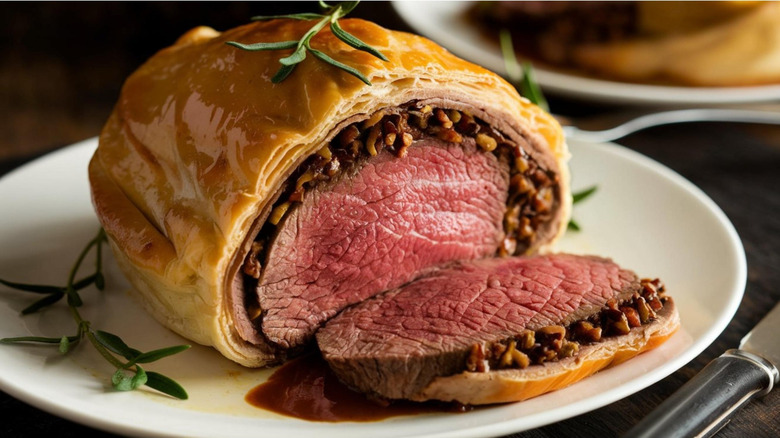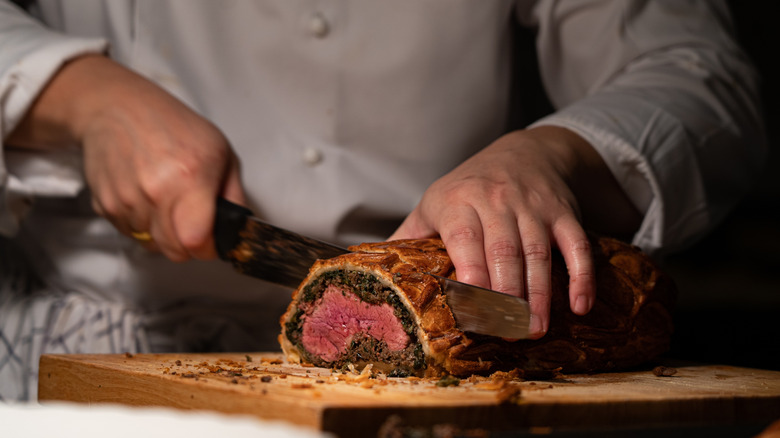How To Cut Beef Wellington So It Doesn't Fall Apart
A homemade beef Wellington is the star of any meal, so you don't want to ruin the experience by cutting it incorrectly. This dish combines tender steak with flaky puff pastry, and the contrasting textures require finesse when slicing. Luckily, a few tried-and-tested methods can ensure the perfect slice.
The first tip is that it's all about balance. You don't want to cut it too thick or too thin, as either one will compromise the dish. If it's too thin, the structure breaks down; if it's too thick, you'll end up overstuffed and battling the meat sweats. A slice about one inch thick is ideal to ensure the pastry doesn't crumble and the meat-heavy dish maintains its neat composure.
Importantly, a sharp knife is crucial for the task. A clean, straight cut through the pastry prevents it from breaking apart, and struggling through the meat can also cause the surrounding layers to fall apart. Additionally, the middle layer of pâté, which separates the beef from the pastry, is quite thin, so excessive force can cause it to separate from the rest of the slice.
While the type of knife matters, there's no need to buy a specialty one. In fact, your bread knife has multiple uses: it works well for cutting both puff pastry and cooked meats. A good serrated bread knife prevents the puff pastry from being destroyed and is sturdy enough to handle well-cooked beef, even if it turns out a bit tougher than intended.
More tips for making beef Wellington
Beef, puff pastry, and mushroom stuffing — how hard can beef Wellington be? The truth is, the details can make all the difference. The cut of steak you choose for your beef Wellington impacts how well the elements come together and how easily the dish slices. Whatever cut you select, it's vital to wrap it tightly in the pâté, and refrigerating it before wrapping it in the pastry helps it hold its shape during cooking. For added flavor, sear the meat before baking. The Maillard reaction will brown the meat and release a richer, nuttier taste. This step won't dry out the beef, and will bump the dish up a notch in the end.
Mushrooms contain a lot of water, so make sure they are cooked until dry before forming the pâté. Excess moisture can seep into the other layers, potentially compromising both the structural integrity and flavor of the dish. Many recipes recommend adding a crepe layer between the pâté and pastry. While not strictly necessary, this step significantly helps keep the juices contained, ultimately protecting the structure when sliced. To store beef Wellington, wrap it tightly in tin foil and place it in the fridge, where it will remain fresh for up to five days.


